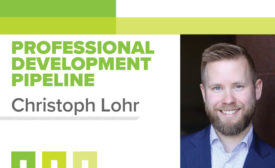Christoph Lohr
The entire concept of business strategy derives from military strategy.
Read More
Christoph Lohr: Knowledge expansion
A review of the book “Troubled Water: What’s Wrong With What We Drink.”
April 7, 2020
Christoph Lohr: How are personality metrics different?
People analytics: An even deeper dive.
September 12, 2019
Christoph Lohr: Diving even deeper into people analytics
Engineering better work experiences, Part 2
August 19, 2019
Christoph Lohr: Engineering better work experiences
The largest challenges always seem to come down to communication.
July 16, 2019
Christoph Lohr: What does a good one-on-one meeting look like?
Solving retention challenges — Part 3
April 25, 2019
Christoph Lohr: One-on-one meetings with managers can solve retention challenges — Part 2
Data and examples show the effectiveness of one-on-one meetings
March 25, 2019
One-on-one meetings with managers can solve retention challenges — Part 1
Retaining high-knowledge workers is key as baby boomers retire.
February 25, 2019
Get our new eMagazine delivered to your inbox every month.
Stay in the know on the latest plumbing, piping, hydronic and fire protection trends.
SUBSCRIBE TODAYCopyright ©2024. All Rights Reserved BNP Media.
Design, CMS, Hosting & Web Development :: ePublishing



